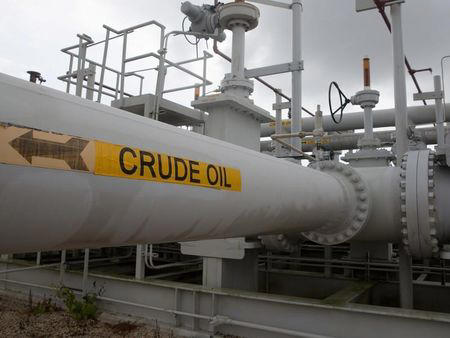In Asian trading on Thursday, oil prices faced downward pressure primarily due to a strengthening U.S. dollar, which reached a two-month high against other major currencies. A stronger dollar typically makes commodities priced in dollars, like oil, more expensive for holders of other currencies, thus reducing demand and exerting downward pressure on prices.
Brent crude futures, expiring in August, declined by 0.4% to $84.91 per barrel, while West Texas Intermediate (WTI) crude futures also dropped 0.4% to $80.56 per barrel by 21:05 ET (01:05 GMT).
The decline in oil prices was compounded by a surprise increase in U.S. crude oil inventories reported in the previous week. According to government data, inventories grew by approximately 3.6 million barrels (mb) for the week ending June 21, far exceeding market expectations of a 2.6 mb drawdown. Additionally, gasoline inventories saw a significant buildup of 2.7 mb, signaling weaker-than-expected fuel consumption even during the typically high-demand summer travel season.
These inventory increases heightened concerns about sluggish U.S. fuel demand amidst ongoing economic challenges, including persistent inflation and elevated interest rates, which can dampen consumer spending and economic activity.
Market sentiment was further influenced by anticipation of key economic indicators from the U.S. later in the week. Investors awaited a revised gross domestic product (GDP) reading for the first quarter and the Personal Consumption Expenditures (PCE) price index data, which serves as a crucial inflation gauge for the Federal Reserve. These data releases were expected to provide insights into the future trajectory of interest rates, influencing investor sentiment towards commodities such as oil.
Geopolitical tensions in regions like Russia and the Middle East had earlier supported oil prices by stoking fears of potential supply disruptions. Despite recent declines, oil prices had still registered a 4% increase through June, buoyed by ongoing supply cuts implemented by the Organization of the Petroleum Exporting Countries (OPEC) and its allies (OPEC+). These production cuts aimed to stabilize global oil markets amid fluctuating demand and geopolitical uncertainties.
Looking ahead, market participants remained cautious, monitoring economic data releases and geopolitical developments closely to assess their impact on oil supply and demand dynamics. The interplay between economic indicators, global energy policies, and geopolitical tensions would continue to shape the trajectory of oil prices in the coming weeks.
